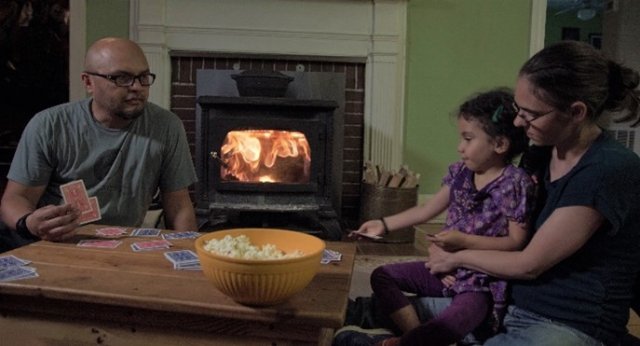Sample Article: Burn Wise Health and Safety Awareness Kit
Feel free to use this sample article in your organization’s newsletter, local newspaper, website, or social media.
RETURN TO TOOLKIT HOME
Tips for a Hotter, Safer Fire with Less Smoke - Sample article

As temperatures get colder, many of us start our first fires of the heating season. We want the warmth of a cozy fire, but not the unhealthy smoke or the creosote build-up in our chimney that can increase the danger of a house fire. The less efficient the fire, the more wood smoke pollution is produced and the more potential for creosote to build up. According to the National Fire Protection Association, a leading factor contributing to fires from home heating is a dirty chimney (i.e., creosote build-up).
Here are some tips for burning the Right Wood, the Right Way, in the Right Appliance for a hotter fire with less smoke and creosote.
Burn the Right Wood:
- Burn only dry, seasoned wood for a hotter fire with less smoke. Wood burns most efficiently if the moisture content is 20 percent or less.
- Split your firewood before storing -- it dries much faster. Slope the woodpile cover to encourage rain runoff.
- Freshly cut wood needs time to season – store for a minimum of 6 months for softwood and 12 months for hardwood. To see if your wood is ready to burn, test it with a moisture meter. Watch EPA's how-to video.
Burn Wood the Right Way:
- The easiest way to get a fire going is to build a small fire. Use seasoned pieces of kindling or an all-natural fire-starter. Gradually add larger pieces of split, dry firewood.
- A fire needs oxygen. Provide sufficient air to the fire and keep space between logs when adding more fuel.
Use the Right Appliance:
- Upgrade to a cleaner wood heating device like an EPA-certified pellet device or catalytic/hybrid wood stove or fireplace insert. A properly installed and operated EPA-certified wood stove (or fireplace insert) can reduce air pollutants by 70 percent compared to older uncertified models. Find cleaner-burning appliances at www.epa.gov/burnwise.
- Have your wood burning appliance and chimney inspected and maintained annually by a certified professional for optimal performance and reduced creosote build-up.
- Avoid the wood storage and smoke altogether and upgrade to a gas heater or heat pump.
EPA’s Burn Wise program encourages individuals and communities to implement safe and efficient burning practices by burning the right wood, the right way, in the right appliance.
